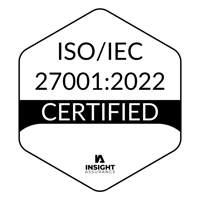 Photo: homegymr
Photo: homegymr
The healthcare industry is a rapidly changing world, with creative entrepreneurs and innovative alternatives gaining ground against the rising costs and lackluster benefits of traditional care.
As such, nonprofit leadership teams have a fiduciary responsibility to their employees to regularly evaluate their healthcare offerings and determine if they still make financial and organizational sense. Even if you and your employees are content with your organization’s current plan (perhaps especially if you’re content), re-evaluating every few years keeps leadership up-to-date with advancements and in-the-loop with other options that may serve the organization in more effective ways. A competitive job market makes recruitment and retention a significant challenge for nonprofits, so knowing – and choosing – the best healthcare options can make a world of difference when it comes to finding and keeping talented staff.
There are three recommended steps to conducting an internal audit, which should begin about 4-6 months ahead of open enrollment to ensure enough time to carefully explore all options:
Step 1: Know Your Current Plan Backwards and Forwards
Examine your current plan fully with your board/leadership teams, and ensure you understand all of the benefits offered to employees and the costs to your organization. Consider distributing surveys to your employees, your leadership team, and your board members to find out exactly what they think of the current plan. A good broker should be able to find a plan that meets most – if not all – staff needs while also maintaining integrity with client budgets.
Step 2: Know Your Broker (and Carrier) – and don’t be Afraid to Shop Around
Delving into deep – and sometimes challenging – conversations around the choice of a broker may be difficult. However, it’s also incredibly necessary to do this research in order to find the perfect broker and healthcare approach for your nonprofit. Three key areas should be covered:
- Discussions with your board about the pros/cons of your current broker (including any personal relationships or conflicts of interest that may be at play)
- Shopping around for a comparison or a new broker, paying close attention to each candidate’s experience, knowledge base, compensation, value-add, cost-effectiveness, and customer service.
- Conducting your own independent research on what carriers are available to your region, the types of plans they offer, and cost-comparisons with similarly sized organizations.
Step 3: Know Your Options for Funding
When you feel confident you have made the right choice of broker, immediately schedule a sit-down meeting to review your current plan and to discuss the pros and cons of all the funding possibilities available for your organization. Brokers should be aware of and ready to discuss the four main categories of funding group insurance plans:
- Fully funded insurance
- Self-funded insurance
- Partially self-funded insurance
- Multiple Employee Welfare Arrangements (MEWAs)
Re-evaluation of your organization’s healthcare plan may seem daunting, but by starting well-ahead of open enrollment, enlisting the support of your entire leadership team, and breaking each chunk down into manageable pieces, the process can become streamlined and efficient.
To learn more about how and why to conduct an internal audit
of your employee healthcare, please join us for a FREE webinar:


.png?width=1501&name=Nonstop_Logo-22-Horizontal%20(2).png)




